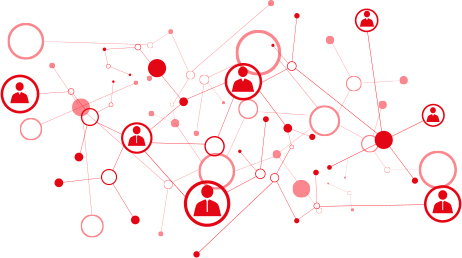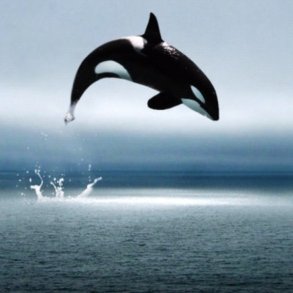By Max Bailey and originally published at theteamakers.org
I believe the workplace will still exist in 5 years, but I believe it will be very different from today.
Large companies that survive will have adopted a number of completely different ways of doing things, and ways of being together as collaborative human beings.
I’m going to tell a story of a day in the life of a collaborator at such a company, but first some information: I expect that the sort of abundant, resilient organizations that make it, will have these characteristics:
- Purpose driven as opposed to product focussed (and an evolving purpose at that)
- An environment of implicit trust and transparency between human beings
- Acceptance of being yourself, with self esteem and humility
- A feeling of safety to express oneself, to experiment, to fail and to learn
- Welcoming personal transformation and collective transformation through continuous relational practices, while knowing that everyone fails all the time at being perfect
-
Widespread capitalisation on the massive potential of collective intelligence
- Coherent, but decentralised management – self regulation and a tendency towards self direction. Made possible through real time digital platforms that make possible a real shared consciousness of situational data
- Voluntary contribution as opposed to fixed positions and nominations, with continuous and open feedback as a basis for understanding and growth.
-
Leadership is spontaneous and dynamic; it happens where it needs to; everyone can be a leader, there is no attachment to being a leader once the need has passed
- Voluntary contribution to solving tensions beyond the immediate task
- Welcoming the iterative nature of EVERYTHING (not just your product); addressing tensions as they come up
- A willingness and ability to openly collaborate/innovate with the internal and external ecosystem
- Flexibility, agility, creativity and speed are everywhere

A network organization (image from CAS Software)
Collaborators connected on emotional level:

Now let’s imagine what it might look like for someone contributing to such an organization.
It’s 2022, and every day I have the feeling of contribution to something that makes sense and with amazing people: we’re all in it together.
Our Transformational, Ambitions and Evolutionary Purpose is simply: “connecting humanity”. We operate the global airspace, and offer vehicles for urban mobility and long distance travel through the atmosphere and space.
We are simply called: Humanity In Motion.
We are possibly the most ambitious community in the world and we achieve incredible things. Do you want to know how we do that?
In 2015 we started to develop a culture that allowed people to become the best they can be; whatever that is. A culture of personal growth, collective intelligence and collaboration. A culture that lets us unleash the true potential of everyone in the ecosystem. This was not an easy journey to begin, and it is something that will never be finished.
I personally contribute to our large aircraft products: the most radically disruptive hybrid electrical machines out there. We are disrupting the market place and the environmental impact of human travel.
We still have large development programs. The program organization is not like the old days where there were thousands of managers acting under the illusion of control… such a waste of PowerPoint slides. Now, the program teams are very small, agile and multifunctional: only around 100 people!
All data related to all programs and projects are fully visible to everyone inside the company via our contribution platform that is easily accessible from all my devices.
At any moment I have full data transparency in real time including profit and loss, sales, prices, objectives of any program, manufacturing issues.
It’s not just commercial data that is transparent: I can access all engineering data from the real fleet in real time thanks to our digital twins. Now I know how those aircraft are really used and I can act upon it!
Everything that the program wants is expressed as needs: needs that can be met by any individual or groups of individuals forming teams and committing to deliver. As a project member and contributor I know who else is working with me to deliver on the needs. I can see every focal point through the whole chain of value creation.
I can see, through the same platform and in real time, what teams have formed and what their objectives and status and even their momentary needs are. I can see whether they consider themselves overloaded or not and where I can go to help if I have some spare capacity.
Teams form and disperse naturally – absolutely organically and based on trust; sometimes for a few weeks, sometimes for months or even years. They decide based on the need.
What does all this mean for you and me? I can go wherever I need to go to add value so long as it is needed, and I am available and willing to contribute.
Sometimes I am contributing to 1 or 2 projects for months at a time, at others times it’s only a few hours work here and there. The rest of the time I have all the tools I need at hand to innovate.
I find this really invigorating: I have broadened my capabilities massively compared to where I was in 2015. In those days I was considered ‘old, over the hill and too rigid to change’. I had a very narrow band of competencies that was strictly controlled. I had to book every hour to codes that meant nothing and I could not escape the confines of my engineering department.
Looking back, it was the inflexible system that constrained and labelled me. It seemed grotesquely inefficient to me.
My work was based on my previously acquired skills and not my motivations, my potentials, my curiosity. So many levels of management deciding what could and could not be done… there was no trust. What was the cost of controlling, and what of the lost opportunity?
Since then, I have contributed to things I am passionate about, and I’ve done it well! Sometimes I had to learn new things and I made mistakes by myself, but it was safe: my colleagues helped me through. We are all in the same boat and we know what we’re trying to achieve: to fulfil our purpose. I failed fast, cheaply, safely, and I learnt a lot.
How do I know that I made my contribution well you may ask? My colleagues told me so with a direct and regular verbal feedback, and more visibly through our platform. We all do it: either spontaneously, or every couple of months for everyone we work with. I have a fully visible rating of how valuable my colleagues considered my contribution; not only about technical input, but how I made the working environment better, how I helped others to learn, and for example how I stood in for a colleague who had to take some time off with his sick children.
We can recognize each other in many ways to give an overall impression of the added value. It’s not always good feedback: I am human and even I make mistakes.
These days we are mature enough to give each other the tough messages as well as the easy ones, but this has only helped to make our relationships deep and strong. It might have sounded strange from the perspective of 2015, but now I feel like I’m with my family when I’m here.
The so called ‘talents’ of the business, the ones nominated from the old performance management process disappeared; We are all talents; the ones who go far above the call of duty are now self-evident thanks to the value based feedback system.
There’s no 2-tier system of feedback here anymore… for example, big program core teams are regularly assessed in terms of contributed value by a fully transparent feedback system that combines, customer, workforce, supplier input and of course input from our CEO. Even the CEO is re-elected through a mixture of real feedback from all over the place (including customers and shareholders).
Doesn’t all this flexibility frighten people? That’s something we used to worry about in the beginning. It was tough, but we don’t look back now. I have some friends who used to be locked into staff functions like Quality, Procurement and Finance, HR, Communications, Marketing.
Now they add value using those very important competences, but they are embedded in projects adding real value where it is needed. They agree with me that the flexibility they have is so rewarding and they the output is far greater now. They have all grown.
It’s not only about our digital contribution platform and the total data transparency it gives us; it’s a lot about our personal maturity in terms of how we relate to one another. It makes us laugh when we think back to 2015 before the transformation started. In those days when I was upset with a colleague I didn’t tell her. I just let it fester and make me angry until one day I shouted at my boss to sort it out!
Now I don’t even have a boss so I have to sort these things out myself. It was hard at first, but the company and my colleagues really helped me to learn how to understand my own emotions and attachment to certain mental models. Now I am truly liberated from the ways of my past.
I coach my colleagues and my colleagues coach me. We are present and there for each other on a deep and intimate level of connection. This connection and implicit trust is the real building block for speed and collaboration.
Make no mistake though, this is not some hippy loveland where everyone is in some state of forced happiness all the time. We are mostly brutally honest ALL OF THE TIME. I have learnt the welcome the words and actions of others, in relation to my own inner experience with curiosity. This has been a hugely empowering thing: now I do not feel afraid when someone criticises me; I simply want to understand it, and together we figure it out.
Maybe what I did was bad, maybe what the other experienced was loaded with emotion from another part of the day. Sometimes we screw it up: I ain’t no saint: but we normally manage to figure it out and deepen our relationships at the same time. There aren’t too many hidden agendas anymore.
How did we get here? How did we start?
The transformation was a multi-centric, multi channeled mutation: it was not a top down program (at least at the beginning it did not have top down support). There was a loose permission given from the top to do something, but I think people were afraid. The real change was organic and came from wherever people were courageous enough to do something and challenge the status quo.
One step was that a few ‘managers’ changed their posture from controller to coach: giving up control, giving responsibility and step by step extending the limits they were willing to give, and crucially, what we (no managers) were willing to take.
We opened up the silos using an internal social media platform; we started to give people more flexibility, to reduce the burden of clocking every hour to specific projects.
We also had some people who pretty much took it as their responsibility to disrupt the culture. I remember it was uncomfortable for many at first to see people creating social crowd movements in the company and even breaking the ‘rules’.
But this ‘just do it’ mentality was exactly what we needed. We needed people to get out of the victim state of consciousness (waiting for someone else to do something, while simultaneously complaining that no one was doing anything).
The whole thing was a general softening of boundaries: for both individuals and groups, twinned with an acceptance of discovery and iterative ways of doing things as opposed to linear planning and execution.
Our old heavy R&T process was revolutionized within a year or so after the start of the transformation. We now focus on roadmaps and potential new target markets. We got back our appetite to take risks and get into game changing industries like urban mobility. We started to do ambitious, daring and inspirational projects that got people excited. WE push the limits now, and sometime we undermine our own legacy products: something that would never happen back then.
Now, we are able to exponentially accelerate projects beyond our own staff: we use the crowd. We created a whole internal/external ecosystem around our purpose. Individuals and groups of people are now seamlessly integrated into the contribution platform. This includes the classical suppliers as well.
We use the ecosystem to generate ideas, solutions, test results and even funding.
Not everything was a success, some of those projects failed big time. But the shift in our approach was that in 2017 we started rewarding failure: we had the first ‘rewards for failures’: Excellent meaning that we learnt something. The bigger the learning, the bigger the recognition of value.
This has since emerged into a widespread set of behaviours that look for trying things out early, testing them with real user/customers, and letting things emerge. There is no such much need for ‘rewarding’ this anymore: it has become embedded.
This was a holistic change that affected all of us. Thanks to the focus we put on personal maturity I know myself deeply, which helps me to build incredible relationships. With these kind of bonds we create teams who in turn create fantastic things for the world, adding value where we could never have imagined it all those years ago.
What’s really great now is that we seem to have got our mojo back across the whole company. In 2015 it looked like we were grinding to a halt. No real big innovations, no real big game changers on the horizon. It felt like everyone was settling down to wait for something. Then we realized that Elon Musk and others were changing the rules of the game of the entire world, and if we were going to survive we better do something.
Sorry, I was getting carried away… back to creating real value. At the moment I’m particularly interested in this new manufacturing project to do a lean startup exercise on a new form of automation, we do lean startup everywhere now. They have a need for something I think I can help with. I have some time so I’ll get in touch with them and see what I can commit to.
For now my friends, goodbye and have fun fulfilling your full potential and contributing to our purpose.

This is a fictional story. It does not represent the views of my current employer.
Inspiration taken from:
- Freedom Incorporated (Isaac Getz)
- Reinventing Organizations (Frederic Laloux)
- Resourceful Humans & their incredible tools and cultural change approach
- Exponential Organizations (Salim Ismail)
- CAS Software – network organization (see diagram at top of article)
- The LEAN Startup (Eric Riese)
- Value Proposition Design / Business Model Canvas
- Agile SCRUM methodology
- A Way of Being & On becoming a Person (Carl Rogers)
- The Wisdom of Insecurity – Alan Watts
Republished with permission of the author.
Featured Image/graphic link and block quoting added by Enlivening Edge Magazine.




